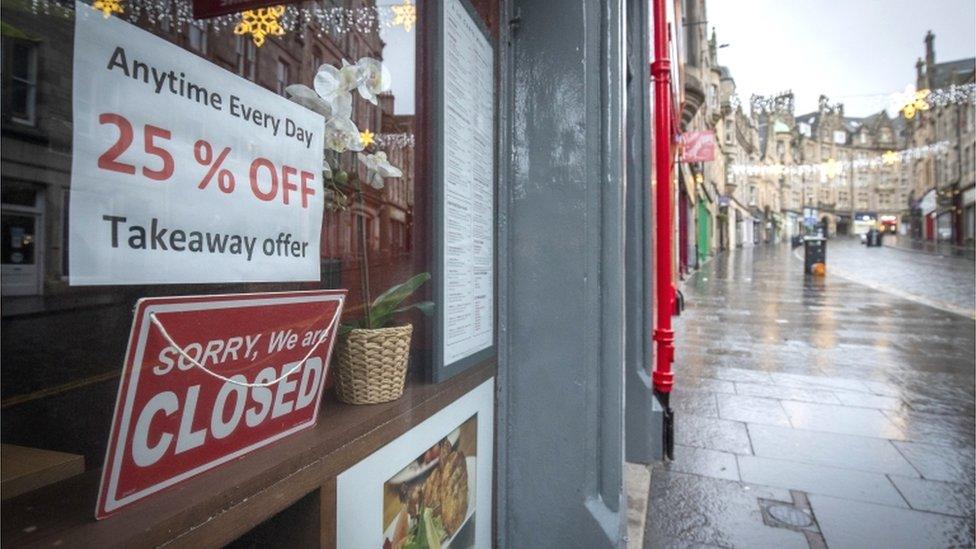Covid in Scotland: 'One in seven' shops lies vacant
- Published

One in seven shops in Scotland is currently empty and no longer trading, according to new industry figures.
The Scottish Retail Consortium (SRC) found that the shop vacancy rate rose by 0.4% to a six-year high of 14.4% in the fourth quarter of 2020.
Scotland now has the fifth highest proportion of retail vacancies out of 11 areas of Great Britain.
SRC blamed "the upheaval and tumult wrought by Covid" and repeated government lockdowns and restrictions.
Vacancies in Scotland's shopping centres increased from 16.8% in the third quarter to 18.2%, while the rate for high streets remained steady at 13.5%.
Retail parks also saw an increase in the number of empty shops but remained the locations with the fewest vacancies, at 11.9%.
Scottish shop vacancy rates since 2015:

SRC director David Lonsdale said: "These figures don't include the announcements over recent days of further store closures by some household names - and the likelihood is things will continue to worsen in the coming months.
"Shop vacancies are at a six-year high, footfall has slumped, and non-food stores have seen revenues plunge by a third.
"We hope to see a recovery plan from government to help get retail motoring again, including some semblance of the potential route back to reopening the sector and out of lockdown."
Local Data Company (LDC), which collects the vacancy figures, said the latest numbers only reflected the "very immediate impact" of the pandemic on the retail market.
Head of retail Lucy Stainton said: "Hundreds of thousands of stores have been struck by changing restrictions and many of these remained temporarily closed in the intervening periods between lockdowns. Therefore these businesses are not reflected in the permanent vacancy figures.
"With each round of restrictions, these 'frozen' units are less likely to reopen and so we're predicting the compound effect of each lockdown being visible in later figures.
"With a limited number of new store openings, structural solutions will need to be found to prevent these vacant units lying empty for two, three, four years or more."


- Published20 January 2021

- Published8 January 2021

- Published7 January 2021
